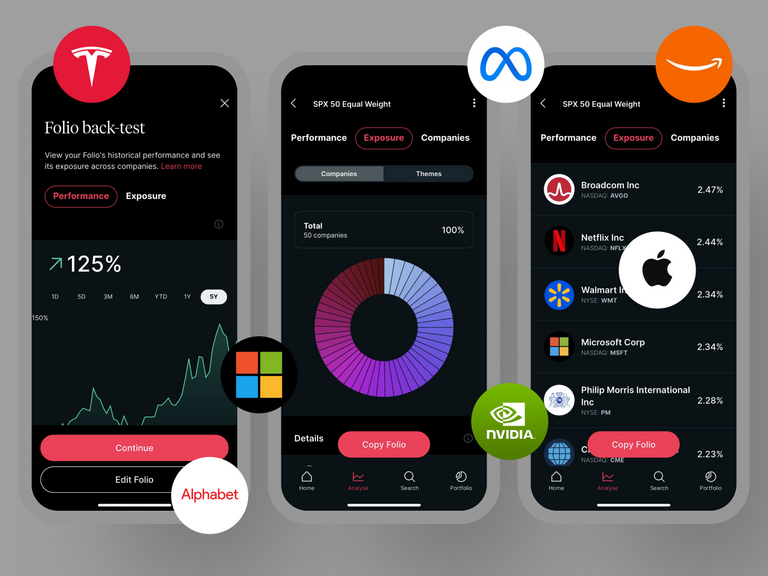A weakening US dollar, strengthening commodity prices and China’s reopening have fuelled the biggest rally in emerging markets since 2010. What was behind the surge and how should retail investors approach the notoriously volatile asset class? J.P. Morgan Asset Management’s market strategist and expert in emerging economies Gabriela Santos discusses the growth opportunities outside of mainstream markets over the next decade.
Out with the old, in with the new. After a decade-long emerging markets winter, international equities are starting to flourish as spring takes hold. The renewed strength in the asset class is part of a major shift that has kept global market strategists like Gabriela Santos — who is also a managing director at the financial services juggernaut J.P. Morgan Asset Management, which manages $2.5trn in assets — busy.
“The last 15 years were really a very unique investing environment, where it was all about facing risk, a specific handful of companies doing well and valuations not really mattering,” Santos tells Opto during a phone call from her home in New York. “It was a specific type of investing environment, where you could get away with buying an index or investing in tech companies and calling it a day. I think we’re at a very interesting turning point.”
As a long-time emerging market bull, Santos has followed the countless false starts in developing assets over the past decade, but believes the stars are finally aligning for an extended rally to occur. “We’re starting to see [emerging markets] really take off because of five major factors aligning,” the strategist says. These include a weakening US dollar, “China’s reopening”, unrevised earnings expectations, “discounted valuations” and several secular trends that are expected to drive growth in the space, such as the rise of Asia’s middle class.
Changing macroeconomic conditions have created a thriving environment for the emerging world. Since the US economy began showing signs of a slowdown, Wall Street has been in decline — the S&P 500 shed 18.1% in 2022. Developing equity markets (particularly China) were also dragged down in the selloff, but surprised investors when they started a five-month rally late last year. The iShares MSCI Emerging Markets ETF [EEM] rose more than 20% from a two-year low of $34 in October, to above $40 in February.
The rally, however, has subsided in the past two months, with the MSCI’s index for emerging markets entering correction territory on 10 March after falling more than 10% from its January peak. The reason for the pullback could partly be attributed to the US Federal Reserve continuing to raise interest rates — the space is particularly sensitive to monetary policy, as higher rates in the US tend to make riskier assets less attractive in comparison. While the Fed’s tightening cycle is not yet expected to ease — it has increased rates eight times in the year since March 2022 — Santos is bullish about emerging market equities.
Playing catch up
The last time developing markets were in a sustained bull run was during the early 2000s, when outsized demand for commodities helped fuel a supercycle — a period of time characterised by sustained strength in commodity prices as a result of strong demand. After peaking in 2007, emerging equities experienced three major down periods, until eventually setting an all-time high in February 2021. As of 21 March close, the MSCI Emerging Market ETF was trading 10% off its record.
Despite recent volatility, Santos is fiercely optimistic that the long-term investment case for the space remains strong, based on several factors. “The very first one is this idea of a turn in the dollar, as emerging market equities tend to be [inversely] correlated to the cycle of the currency.” A weak US currency generally means lower foreign currency-denominated debt servicing costs and related interest payments for the economies of emerging market nations. Exports from the US also become cheaper for foreign consumers. It may also be good news for emerging markets, as investors tend to have a higher risk appetite and could benefit from positive upswings in regional currencies.
After 15 years of strength, Santos believes the dollar has peaked and could go through a multi-year period of weakness due to the US having a large trade and fiscal deficit, which could be good news for emerging markets. The US dollar index rallied to a 20-year high by late September last year, after the Fed started an aggressive campaign of raising rates in March 2022; a catalyst that leads to strength in the dollar is the hiking of rates from central banks hurrying to tame inflation.
Emerging economies have also benefitted from being ahead of the curve on the inflation front, Santos told the Opto Sessions podcast in January. “Central banks [in the emerging world] started raising rates before the Fed did. [They had] already [started] in 2021, not 2022, so they were able to build some juicy interest rate buffers that attracted capital and kept their currencies strong.”
During the early 1980s, the Fed’s efforts to tame double-digit inflation triggered a debt crisis in Latin America. Fears of a similar crisis unfolding as central banks around the world set a course to raise rates proved unfounded when Latin America became one of the few equity markets to close 2022 in positive territory, alongside the Middle East. The region benefitted from a rally in commodities, particularly precious metals — Chile, for example, is the world’s largest copper producer, followed by Peru. Emerging markets ’resilience in the face of a global bear market took many investors by surprise.
Compared to the US, emerging markets are generally less expensive to invest in, due to difficulties raising capital and a lack of liquidity. And following last year’s economic contractions, emerging markets have become even cheaper. Santos says some emerging markets are trading at significant discounts compared to long-term averages, while the US is still at average valuations. “The discount of international markets versus US markets is double what it normally is: it's a 30% discount.” For Santos, the discounted valuations present an opportunity to investors. “For emerging market equities, we prefer looking at price-to-book instead of price-to-earnings. It's just a more transparent — apples to apples — way of thinking about valuations in a space that has so many different countries in it.” As of late March, emerging markets' price-to-book ratio was at 1.6, she says, which is below the long-term average of 1.8.
“There’s already a lot of gloominess [priced] in international markets. It doesn't mean things have to be perfect for them to outperform, it just means that things have to get less bad. And that's exactly what we've been seeing.”
China’s reopening
As the world’s second-largest economy — the World Bank also calls it the fastest-growing major economy — China is an important player in the emerging world. More than one third of the MSCI Emerging Markets Index is made up of Chinese equities; Taiwan and South Korea both account for another 27%, making Asia the largest contributor to the fund. “There are economies and markets where China is the most important variable [such as in trade or risk tolerance], not the US,” says Santos, who launched J.P. Morgan Asset Management’s Guide to China report alongside teams in Shanghai and Hong Kong.
It’s no wonder Santos believes one of the most important catalysts for growth in emerging markets is the reopening and reacceleration of China’s economy. “This is [more than] 15% of the world's population, with three years of pent-up demand. It matters.” The rebound in economic activity has triggered hospitality industries to bounce back, which Santos says has already played out. “But then there's a second wave of reopening that we don't think is priced in yet, which is the return of consumption more broadly in China.” Investment areas that are expected to benefit from the pent-up demand include consumer staples, consumer discretionaries and healthcare. Luxury goods companies, for example, are expected to see a significant rebound in retail demand as a result of the savings accumulated during the lockdown period. Chinese luxury consumers accounted for a third of the global market pre-pandemic, according to McKinsey. The third wave, Santos expects, will be the return of Chinese tourists — international flights are picking up but are only at 25% of 2019 levels.
“We seem to be in a period where Chinese policymakers are very much in a pro-growth mode. They abolished their zero-Covid policy, they're trying to support the real estate sector and turn more pro on private business,” Santos says. J.P. Morgan’s global market insights strategy team has been upgrading their expectations for China’s economic growth this year and thinks it can grow about 6%.
China’s reopening is not expected to fuel a significant rebound in emerging markets solely due to an increase in economic activity, but also because of improving earnings expectations. “We should always remember that when we invest in equities, we're buying not the economy but earnings,” Santos says. “Even though there's been this turn in China and people have upgraded their GDP expectations, they haven't upgraded their earnings expectations yet.” While Santos is forecasting upside in earnings expectations in emerging markets, she expects downside to earnings forecasts in the US.
“We seem to be in a period where Chinese policymakers are very much in a pro-growth mode. They abolished their zero-Covid policy, they're trying to support the real estate sector and turn more pro on private business”
However, there is a risk that China fails to innovate and isn’t able to boost productivity. “That would be a major risk to our assumptions about their earnings and equity markets growth, and would have broad ramifications for emerging markets.” Indeed, many emerging economies can get stuck at a level of development with a GDP per capita of $10,000, which Santos calls the “income trap”. The term, which was introduced by the World Bank in 2006, refers to the observed phenomenon that, in emerging economies, rapid growth from cheap labour, technology catch-up and investment in high-productivity industries like manufacturing eventually loses strength as the rural labour force shrinks and wages rise.
Thematic opportunities
“There are a lot [of investment themes] to tap into when it comes to emerging markets,” Santos says, “and one country that [offers investors exposure to a lot of thematic investment opportunities] is China.”
China is particularly focused on business innovation as part of its 14th Five-Year Plan, which was released in 2021 and is propelling growth in industries such as robotics and automation. “It’s really hoping to become more self-sufficient in that space. That makes sense. China has an older population. Last year, it saw its population shrink. It does not have favourable demographics so to be able to produce with a good productivity rate, China knows it needs to do things like have robotics and automation powering high-end manufacturing going forward.
“That's an interesting theme that you can access, if you think globally, through the industrials and the technology sector. And if you think regionally, that's a theme very much present in China,” Santos says, adding that investors should take a long-term view when considering returns. For investors looking to get exposure to the space, pure-play companies such as Japanese industrial robot maker FANUC [6954.TY], which generates more than 30% of its sales from China, could be particularly well-positioned to benefit from the growth. The Global X China Robotics and AI ETF [2807.HK], which has holdings in software firm Beijing Kingsoft Office [688111.SHA] and video surveillance manufacturer Dahua Technology [2236.SHE], rose 18% in the first four months of 2023.
It’s not just in China that companies are harnessing innovative manufacturing technologies, but in Asia as a whole. Southeast Asia, for example, has been stepping up its efforts to reach net-zero targets, which has fuelled investments in electric vehicles (EVs). Incentives have attracted automakers to the region, with the likes of Tesla [TSLA] announcing plans to set up an office in Malaysia, for example. While data from Statista shows that China is the top region for EV revenue, with companies such as BYD [1211.HK] and Wuling Motors [0305.HK] netting the biggest sales worldwide (outside of Tesla), countries like Thailand, Indonesia and Singapore are looking to catch up.
South Korea and Taiwan also have a significant presence in the semiconductor space. According to the Financial Times, South Korea is the world’s biggest memory chip producer, with Samsung [5930.KS] and SK Hynix [0660.KS] accounting for 70% of the dynamic random-access memory market. Meanwhile, Taiwan Semiconductor Manufacturing Company [TSM] had a 58% share of the global chip foundry market in late 2022.
There are also structural themes that emerging markets are benefitting from, including the increasing number of middle-class consumers in Asia. According to data compiled by Visual Capitalist, 45% of the global population is considered middle-class, and this figure is expected to swell to more than half by 2030. With the income group accounting for 68% of the world’s consumer spending in 2020, the world’s expanding middle-class is expected to drive significant growth. Santos expects this to be “dominated by both China and India”.
Feast and famine
“It's crucial to remember that emerging markets are really about feast and famine,” Santos says. “It’s often either the absolute best-performing asset class or the absolute worst-performing asset class.” The reason for this has to do with the dominance and liquidity of developed markets, which drives the changing cycle of capital flows to emerging markets, as investors swing between being optimistic and being pessimistic about the growth prospects of these economies. “Another way of thinking about it is as a very volatile asset class.”
Over the past 10 years, US equities have performed really well and the MSCI USA index value went from 33.93 up to 559.53 as of 31 March 2023, an increase of more than 1500% — far outstripping emerging markets ’2% (MSCI Emerging Markets index). During this period, however, there have been times where emerging markets outperformed Wall Street — the last time that emerging markets outperformed the US on an annual basis was in 2015.
“One way that you can account for [the volatility] is by being careful with the weight that you have towards emerging market equities. Perhaps some investors have very high-risk tolerance and can stick through it. But for those that can't, there’s an optimal weight where the return justifies the volatility. And for emerging markets, a neutral grading tends to be about 10%. The other way to account for this is to think about investing in emerging markets with a quality factor overload,” Santos says.
What the firm looks for in quality emerging market companies is a stable cash flow of earnings, lower leverage and strong governance. “When we invest in emerging markets, we have a whole list of questions to gauge if the governance or management of that company and of that country is a risk,” Santos notes, adding that heightened political and economic uncertainty can often get in the way of a country’s demographic and resource potential.
Taking an active management investing approach to the asset class is one of the best ways to navigate the higher level of risk involved, according to Santos. Amid heightened recession fears, the global macroeconomic environment is awash with uncertainty and that sentiment often impacts emerging markets. “If we're not being careful about the quality of the companies we buy... investing in this landscape can be more challenging.”
Past performance is not a reliable indicator of future results.
Disclaimer Past performance is not a reliable indicator of future results.
CMC Markets is an execution-only service provider. The material (whether or not it states any opinions) is for general information purposes only, and does not take into account your personal circumstances or objectives. Nothing in this material is (or should be considered to be) financial, investment or other advice on which reliance should be placed. No opinion given in the material constitutes a recommendation by CMC Markets or the author that any particular investment, security, transaction or investment strategy is suitable for any specific person.
The material has not been prepared in accordance with legal requirements designed to promote the independence of investment research. Although we are not specifically prevented from dealing before providing this material, we do not seek to take advantage of the material prior to its dissemination.
CMC Markets does not endorse or offer opinion on the trading strategies used by the author. Their trading strategies do not guarantee any return and CMC Markets shall not be held responsible for any loss that you may incur, either directly or indirectly, arising from any investment based on any information contained herein.
*Tax treatment depends on individual circumstances and can change or may differ in a jurisdiction other than the UK.
Continue reading for FREE
- Includes free newsletter updates, unsubscribe anytime. Privacy policy





